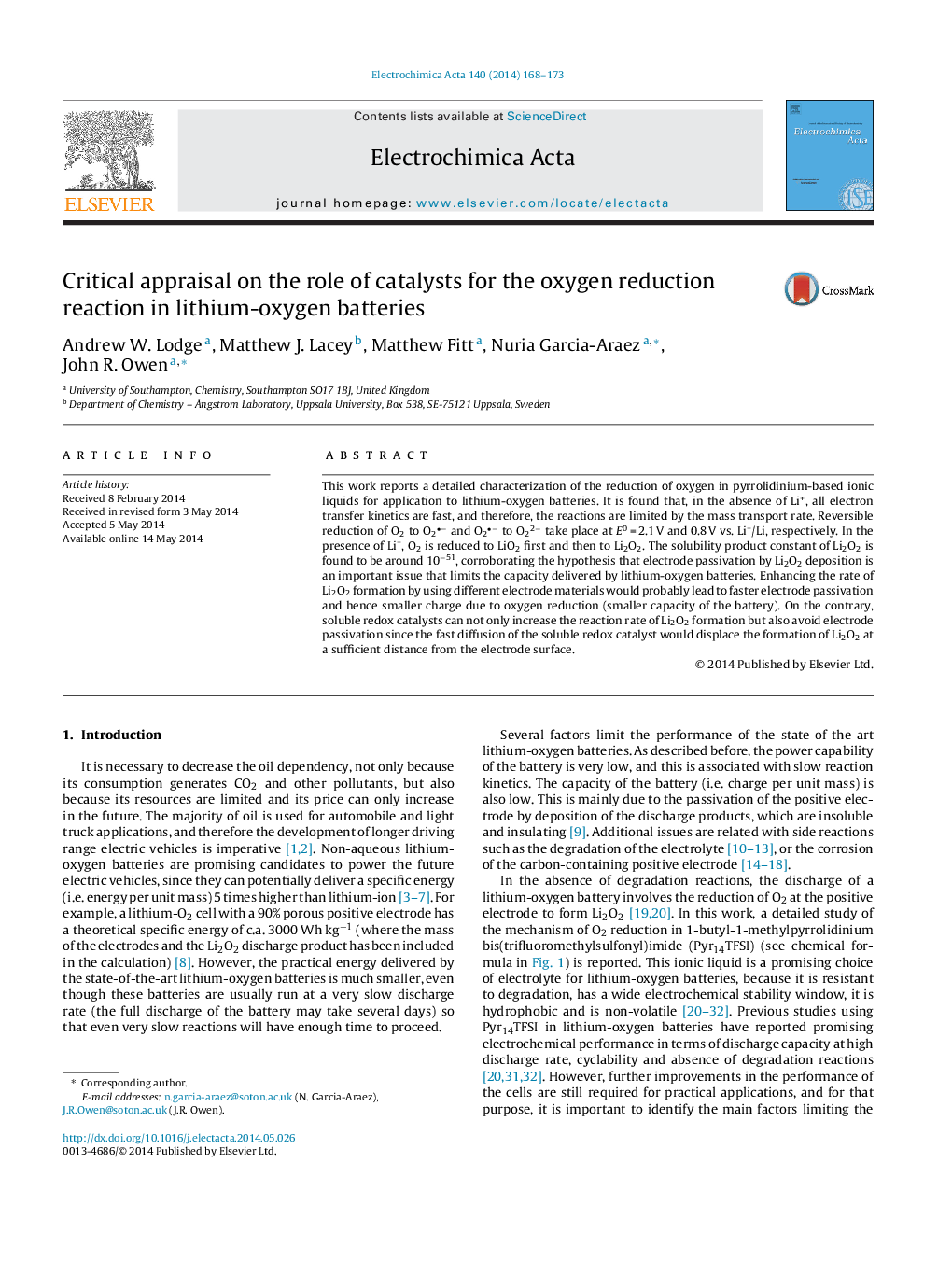| Article ID | Journal | Published Year | Pages | File Type |
|---|---|---|---|---|
| 185208 | Electrochimica Acta | 2014 | 6 Pages |
This work reports a detailed characterization of the reduction of oxygen in pyrrolidinium-based ionic liquids for application to lithium-oxygen batteries. It is found that, in the absence of Li+, all electron transfer kinetics are fast, and therefore, the reactions are limited by the mass transport rate. Reversible reduction of O2 to O2•− and O2•− to O22− take place at E0 = 2.1 V and 0.8 V vs. Li+/Li, respectively. In the presence of Li+, O2 is reduced to LiO2 first and then to Li2O2. The solubility product constant of Li2O2 is found to be around 10−51, corroborating the hypothesis that electrode passivation by Li2O2 deposition is an important issue that limits the capacity delivered by lithium-oxygen batteries. Enhancing the rate of Li2O2 formation by using different electrode materials would probably lead to faster electrode passivation and hence smaller charge due to oxygen reduction (smaller capacity of the battery). On the contrary, soluble redox catalysts can not only increase the reaction rate of Li2O2 formation but also avoid electrode passivation since the fast diffusion of the soluble redox catalyst would displace the formation of Li2O2 at a sufficient distance from the electrode surface.
